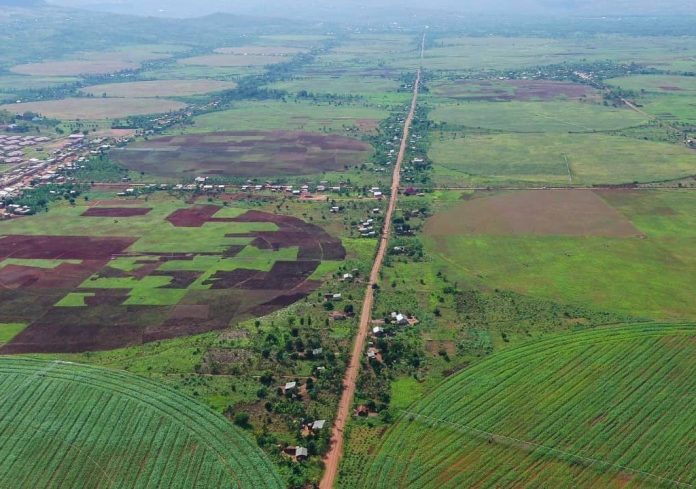Rwanda is making groundbreaking strides in agriculture with the $54 million Nasho Irrigation Project, a transformative initiative designed to boost food security, economic growth, and climate resilience. Located in Kirehe District, this ambitious project is providing 2,099 small-scale farmers with access to modern irrigation technology and renewable energy, setting a new standard for sustainable agriculture in Africa.
Innovation in irrigation & renewable energy
Funded by The Howard G. Buffett Foundation, the Nasho Irrigation Project integrates center pivot irrigation technology, ensuring efficient water use and improved soil conservation. A major highlight of the project is its 3.3 MW solar power plant, equipped with a 2.4 MW battery storage unit, which replaces costly diesel-powered irrigation pumps. This shift to renewable energy not only reduces operational costs but also supports environmental conservation.
To enhance infrastructure, 24 km of existing roads were expanded, and 10 km of new roads were constructed, improving access to markets. Additionally, 144 houses were built for resettled farmers, improving their living conditions and fostering community development.
Boosting farmer productivity & climate resilience
A key outcome of the project is the formation of the Nasho Irrigation Cooperative (NAICO), which empowers farmers to collectively manage and maintain the irrigation system. The ability to farm year-round has significantly increased productivity and incomes while enhancing resilience to climate change.
As of the 2020 agricultural season, farmers reported impressive yield improvements:
✅ Maize: 5.5 – 10 metric tons per hectare
✅ Beans: 1.5 metric tons per hectare
✅ Soybeans: 1.3 metric tons per hectare
A model for Africa’s agricultural future
The Nasho Irrigation Project stands as a model for climate-smart agriculture and rural development. By integrating renewable energy, modern irrigation, and infrastructure improvements, Rwanda is showcasing how strategic investments can revolutionize farming and uplift rural communities.
This initiative ensures food security, economic empowerment, and environmental sustainability, reinforcing Rwanda’s position as a leader in agricultural innovation.
Key highlights of the Nasho Irrigation Project:
$54 million investment in agriculture transformation
2,099 small-scale farmers benefiting from irrigation
3.3 MW solar power plant with 2.4 MW battery storage
24 km of roads expanded, 10 km of new roads built for better access
144 houses built to support resettled farmers
Maize yields increased to 5.5–10 metric tons per hectare
Strengthened cooperative farming under NAICO
As Rwanda leads the way in agricultural transformation, could similar large-scale investments revolutionize farming in your community?

